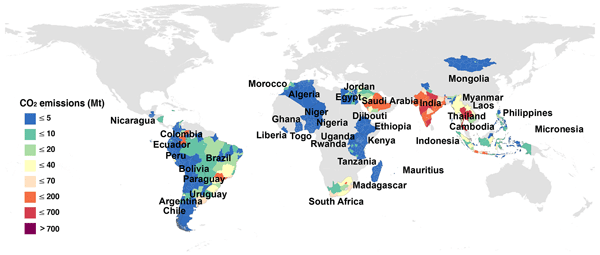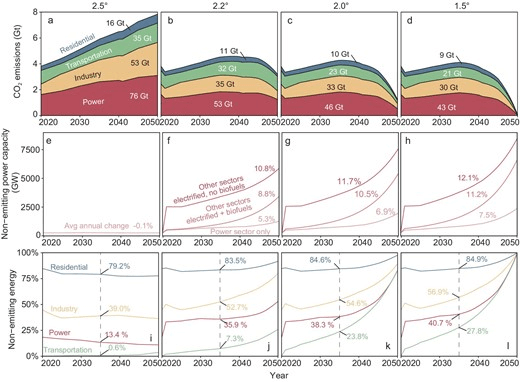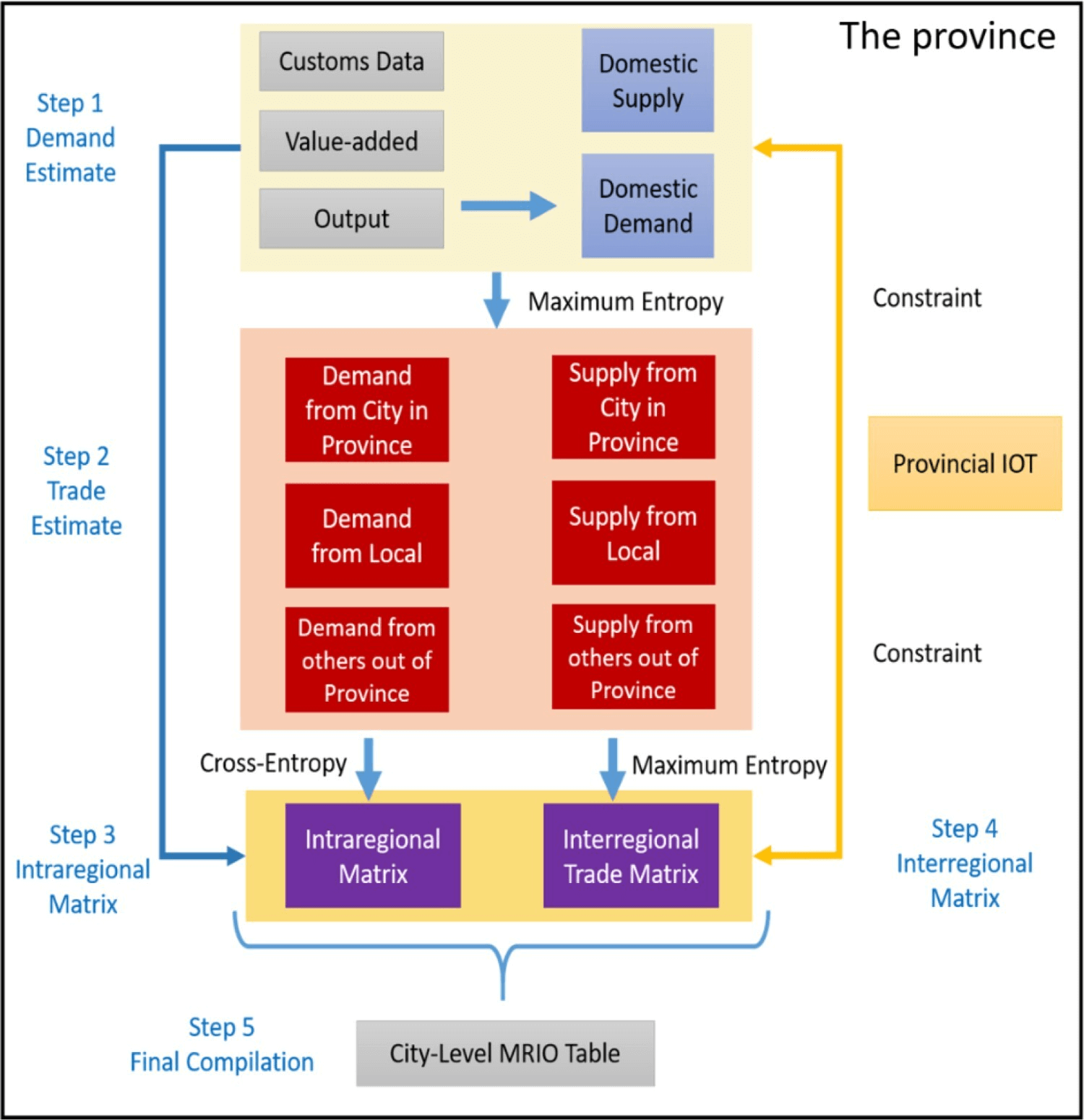CARBON EMISSION ACCOUNTS AND DATASETS
UP-TO-DATE ENERGY, EMISSION AND
SOCIOECONOMIC ACCOUNTING INVENTORIES
Emerging countries
60+
Sectors
135+
Facilies
40,0000
高能耗、高排放、风险大
CEDADS
清洁、低碳、可持续
学术前沿
Energy-related CO emission accounts and datasets for 40 emerging economies in 2010–2019
Global mitigation efforts cannot neglect emerging emitters
Entropy-based Chinese city-level MRIO table framework
Since 2000, CO2 emissions from emerging economies have outstripped those of developed economies. To limit global warming to under 1.5 ∘C by 2100, over 100 emerging economies have proposed net-zero carbon targets. Yet the supportive data are lacking – no inventory of CO2 emission outlines detailed sources by sector or distribution at the subnational level for these economies. Here, we redress the balance by establishing a dataset for an energy-related CO2 emission inventory that covers 47 sectors and eight energy types in 40 emerging economies (https://doi.org/10.5281/zenodo.7309360, Cui et al., 2021). Their emissions, growing rapidly by 3.0 % yr−1, reached 7.5 Gt in 2019 and were sourced primarily in coal and oil (34.6 % and 28.1 %, respectively) and consumed by the power and transportation sectors. Meanwhile, among African countries in this group, biomass combustion was responsible for 34.7 %–96.2 % of emissions. Our dataset fills a data gap by providing a detailed, robust emission accounting baseline for emerging economies – an advance that will support emission reduction policymaking at global, national, and subnational levels.
International efforts to avoid dangerous climate change have historically focused on reducing energy-related CO2 emissions from countries with either the largest economies (e.g. the EU and the USA) and/or the largest populations (e.g. China and India). However, in recent years, emissions have surged among a different and much less-examined group of countries, raising concerns that a next generation of high-emitting economies will obviate current mitigation targets. Here, we analyse the trends and drivers of emissions in each of the 59 countries where emissions in 2010–2018 grew faster than the global average (excluding China and India), project their emissions under a range of longer-term energy scenarios and estimate the costs of decarbonization pathways. Total emissions from these ‘emerging emitters’ reach as much as 7.5 GtCO2/year in the baseline 2.5° scenario—substantially greater than the emissions from these regions in previously published scenarios that would limit warming to 1.5°C or even 2°C. Such unanticipated emissions would in turn require non-emitting energy deployment from all sectors within these emerging emitters, and faster and deeper reductions in emissions from other countries to meet international climate goals. Moreover, the annual costs of keeping emissions at the low level are in many cases 0.2%–4.1% of countries’ gross domestic production, pointing to potential trade-offs with poverty-reduction goals and/or the need for economic support and low-carbon technology transfer from historically high-emitting countries. Our results thus highlight the critical importance of ramping up mitigation efforts in countries that to this point have been largely ignored.
Cities are pivotal hubs of socioeconomic activities, and consumption in cities contributes to global environmental pressures. Compiling city-level multi-regional input-output (MRIO) tables is challenging due to the scarcity of city-level data. Here we propose an entropy-based framework to construct city-level MRIO tables. We demonstrate the new construction method and present an analysis of the carbon footprint of cities in China's Hebei province. A sensitivity analysis is conducted by introducing a weight reflecting the heterogeneity between city and province data, as an important source of uncertainty is the degree to which cities and provinces have an identical ratio of intermediate demand to total demand. We compare consumption-based emissions generated from the new MRIO to results of the MRIO based on individual city input-output tables. The findings reveal a large discrepancy in consumption-based emissions between the two MRIO tables but this is due to conflicting benchmark data used in the two tables.
查看详情
查看更多






更多发布
查看更多

新兴经济体二氧化碳排放报告2022
新兴经济体是近年来全球经济发展的重要推动力,也是全球二氧化碳排放增长的重要贡献者。随着美国、欧盟、中国等碳排放大国先后提出碳中和目标,新兴经济体在《巴黎协定》下也将面临更严峻的减排挑战。在全球气候行动目标和自身经济社会发展的双重压力下,新兴经济体实现低碳转型显得更为紧迫。当前已有诸多新兴经济体在国家自主贡献(NDC)中提出了减排目标,但却缺乏实现减排目标所需要的国家、区域和部门层面的碳排放基础数据。
查看详情

全球全域近实时投入产出表(EMERGING Model)
多区域投入产出(MRIO)模型揭示了不同地区各部门之间的经济和技术联系,已被证明是描述和分析供应链以及消费和生产部门之间关联效应的有效方法。近年来已经被广泛应用在经济、环境、社会等相关领域。随着经济的不断发展,新兴经济体在重塑国际贸易模式以及世界经济供应链中发挥着越来越重要的作用。然而,由于数据收集困难和数据的可得性较低等问题,现有MRIO数据库中并没有提供详细的新兴经济体以及部门的数据信息,这妨碍了MRIO模型分析供应链和国际贸易的历史模式以及预测未来趋势的能力。
查看详情

《新兴经济体二氧化碳排放报告2021》
近日,中国碳核算数据库(Carbon Emission Accounts and Datasets–CEADs)工作组依托清华大学碳中和研究院,在科技部中国21世纪议程管理中心的支持下,于2021年亚太绿色低碳发展高峰论坛发布《新兴经济体二氧化碳排放报告2021》。报告包含30个新兴经济体、47个行业和8类能源品种的二氧化碳排放清单。此外,报告还提供20个新兴经济体分地区(省、州、联邦主体等单位)的二氧化碳排放清单。
查看详情




全口径、可验证的高空间精度、分社会经济部门、分能源品种品质的精细化碳核算数据平台。致力于打造国家、区域、城市、基础设施多尺度统一、
专家团队




查看更多
基金支持








0%

